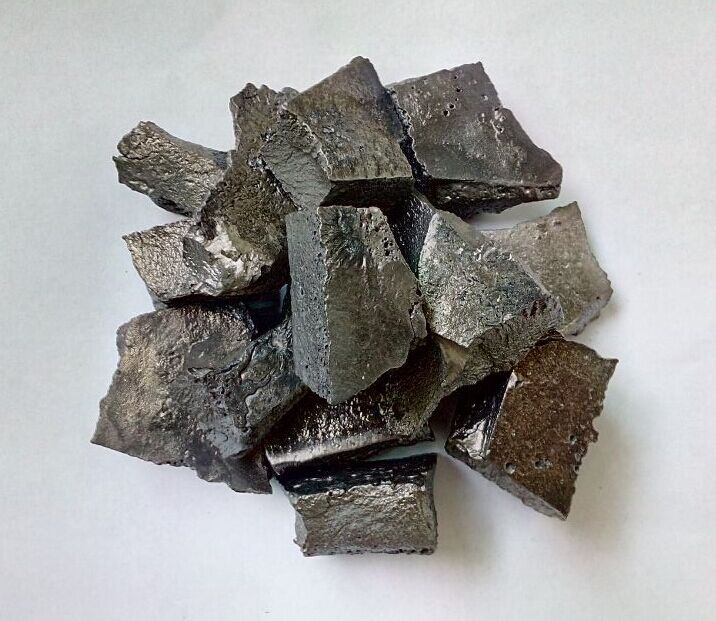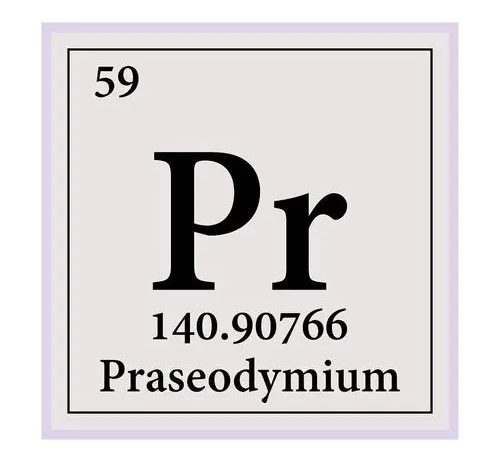Essential Facts About Praseodymium: An Introduction to Rare Earth Metals
With atomic number 59 and chemical symbol Pr, praseodymium serves as the third rare earth metal in the lanthanide series. This soft, silvery, and ductile element exhibits valued magnetic, electrical, chemical and optical properties. However, praseodymium proves too reactive to occur naturally in pure form. Additionally, when exposed to air, this metal gradually develops a green oxide coating on its surface. Scientists must isolate praseodymium through electrolysis of molten chloride salts for study and applications of this element.

In aqueous solutions, praseodymium commonly exhibits a +3 oxidation state, its sole stable form like other rare earths. However, scientists have observed +4 oxidation states for praseodymium stabilized in certain solid compounds, particularly other lanthanides. Under matrix isolation conditions, researchers can induce and study the short-lived +5 oxidation state as well. Still, +3 remains the predominant form in practical praseodymium applications.
Source ofRareEarthPraseodymium
In nature, praseodymium always occurs combined with other rare earth metals. It ranks as the 6th most abundant rare earth and the 4th most common lanthanide, comprising 9.1 ppm of the earth's crust similar to boron. The element's discovery traces to 1841 when Swedish chemist Carl Gustav Mosander first isolated a rare earth oxide residue called didymium. In 1885, Austrian chemist Carl Auer von Welsbach split didymium into two new elements - praseodymium and neodymium - distinguished by differently colored salts. The name praseodymium derives from Ancient Greek words prasinos meaning "leek-green" and didymos meaning "twin." While found in several minerals, praseodymium concentrations prove highest in monazite and bastnasite ores. Recent advances in extraction methods like ion exchange and solvent extraction have greatly simplified isolating praseodymium and other rare earths. Praseodymium metal can also be obtained through calcium reduction of anhydrous chloride or fluoride.

Properties
l Silver-white lustrous metal when pure, though rapidly oxidizes to a green coating in air.
l Soft, malleable and ductile. Can be cut with a knife.
l Melting point of 931°C and boiling point of 3127°C.
l Density of 6.77 g/cm3. One of the densest rare earth metals.
l Strong paramagnetic properties up to a Curie temperature of 35°C. Useful in alloys for magnets.
l Absorbs neutrons readily. Used as a burnable poison in nuclear reactors.
l Yellow-green spectral lines used in some lasers and glasses. Provides a yellow color to glass.
l Readily forms a +3 oxidation state due to three valence electrons. Forms salts like praseodymium chloride.
l Reacts slowly with cold water and rapidly with hot water to release hydrogen gas.
l Used as a dopant to strengthen magnesium alloys used in aircraft engines.
l Other uses in glasses, ceramics, magnets, battery alloys, fluid cracking catalysts.
Applications of Rare Earth Praseodymium
l Magnets - Used in alloys with neodymium and boron to create strong permanent magnets for motors, generators, speakers, etc.
l Optical glasses - Provides yellow color and absorbs infrared radiation. Used in specialty optical glasses, goggles, etc.
l Lasers - Yellow spectral emission utilized in some solid-state dye lasers.
l Ceramics - As an oxide, improves structural properties of ceramics used in engines
l Catalysts - Used in fluid catalytic cracking catalysts for petroleum refining.
l Alloy strengthener - Small additions strengthen magnesium alloys used in aircraft engines.
l Battery alloys - Improves performance of NiMH rechargeable batteries.
l Colorant - Provides yellow and green hues in glass, enamels and glazes.
l Phosphors - Emits yellow-green light in fluorescent lamps and LEDs.
l Metal halide lights - With cerium, creates bright white light emission.
l Research - Useful as a paramagnetic dopant in solid state physics studies.
Conclusions
With atomic number 59, praseodymium belongs to the rare earth metals group. Exhibiting soft, silvery, malleable and ductile properties, this element provides valued magnetic, electrical, chemical and optical capabilities. By combining praseodymium with other rare earths, scientists can create specialized alloys and compounds. These praseodymium-infused materials serve numerous applications across industries ranging from high-tech manufacturing to green energy. Continued research explores additional uses for praseodymium as more of its unique attributes come to light.
